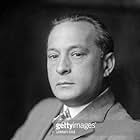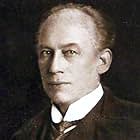This movie, directed by Richard Oswald, is based on the operetta "Les contes de Hoffmann" by Jacques Offenbach (1819-1880), which is a genial musical potpourri from various short stories and novels by the Prussian writer, composer, painter, lawyer and judge E.T.A. Hoffmann (1776-1822).
While Hoffmann's literary work was longtime considered to be merely fantastical, it was finally researched, in the last years, according to its metaphysical background. Characteristic for Hoffmann's work is his life-long fight against rationalism and for the revelation of nature morte, culminating mostly in carnival-like scenes anticipating literary techniques only described in the works of Bachtin and Bachelard.
In Hoffmann's work, we meet amongst many others figures the Nutcracker and the Mouse-King, the Sandman, the fairy Rosabelverde, the doctor Prosper Alanus, the ghost Dapertutto and the gnome Klein Zaches, whose ability it is that whatever somebody speaks and does is ascribed to him. At every turn, the laws of physics are abolished, the Beyond crosses the Here, reality has more than one level, subjectivity is exchanged with objectivity, dead objects turn into living individuals, persons have more than one individuality, that can even cross one another, as in the case of the novel "Princess Brambilla" that preceded polycontextural ontology. Needless to say, therefore, that the laws of logic do not longer exist in Hoffmann's work, but exactly these laws were propagated by rationalism. Hoffmann reacted with establishing a romantic world where the nature is personalized, and Offenbach in his "Contes de Hoffmann" included in this world, liberated from "Illumination", Hoffmann himself as a part of the world created by him. In the end, the Barcarole takes Hoffmann with her, the scene reveals the picture of the river Styx and the ferryman Charon, and also the music seems to come from the Beyond - Offenbach finished it in the night before his death.










